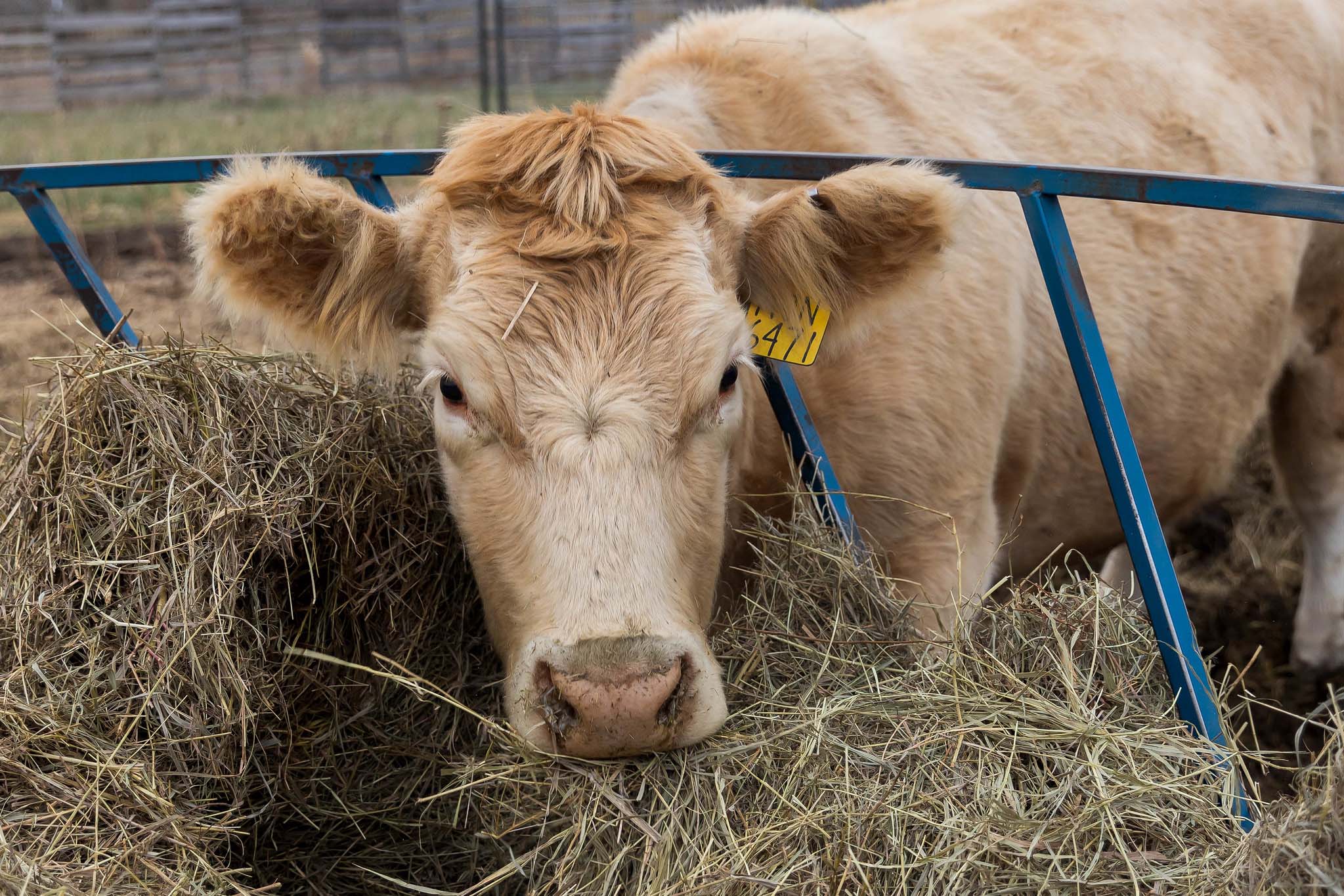
Cattle are often selective about which part they eat first when consuming hay. | Download this photo.
Cattle Chat: Stretching feed resources
K-State cattle experts offer management advice when feed supplies run low
Oct. 31, 2023
By Lisa Moser, K-State Research and Extension news service
MANHATTAN, Kan. — When consumers are trying to extend their buying dollar at the grocery store, meal planning and shopping the sale items are two ways that they can manage their spending to get the most for their money.
In a similar way, some cattle producers are already looking at ways to extend their feed resources because of the lack of moisture that may have cut those supplies short, said the experts at Kansas State University’s Beef Cattle Institute.
Speaking on a recent Cattle Chat podcast, K-State beef cattle nutritionist Phillip Lancaster recommends turning out the cattle on crop residues as a way to extend the time before they need to feed them hay.
“Grazing corn or sorghum stalks are a good feed resource for cows in mid-gestation that have their calves weaned off already,” Lancaster said.
Another option he mentioned was the fall planting of cool-season annuals.
“Those cool season annuals should provide some early grazing options in the spring assuming we get enough moisture for them to grow,” Lancaster said.
If those strategies are not options, K-State veterinarian Bob Larson suggests producers limit the number of hours in the day that the cows are given access to hay. Larson said that cows given free choice access to the hay tend to eat the most appealing part of the hay and don’t as readily consume the less digestible parts.
“To waste less hay, make the cows eat all of one bale before they get the next one,” Larson said. “Another tip is to limit the cows’ access to the hay to 6-12 hours per day.”
In a situation where feed resources are even more limited, K-State Research and Extension beef cattle geneticist Bob Weaber said it may mean some voluntary culling to reduce the herd size.
“Anytime there is a short supply, changing the demand is an effective strategy, and that can be done through the early weaning of the calves as well culling some of the cows,” Weaber said.
He added: “If you are going into a feeding period where hay is elevated in price, you can decrease the demand for the hay by reducing the herd size down to the essential group of cows you want to preserve.”
He suggested producers look at the current market prices as a factor when deciding which cows to sell.
“If the choice is between selling a mature bred cow and a bred replacement heifer, think about which one will generate more value next spring when she calves,” Weaber said. “On average, the mature cow will raise a heavier calf than the bred heifer.”
The experts agreed that if feed resources are challenged and with the current favorable market prices, it may be better to sell now rather than feeding cattle through the winter and selling them in January.
“Most importantly, producers need to have a plan now for what happens when feed runs short,” Weaber said.
To hear the full discussion, listen to the Cattle Chat podcast online or through your preferred streaming platform.

